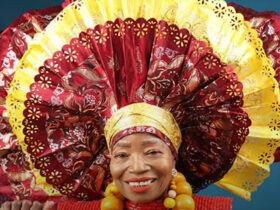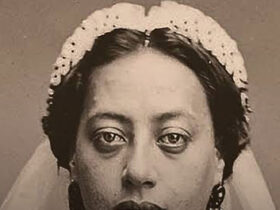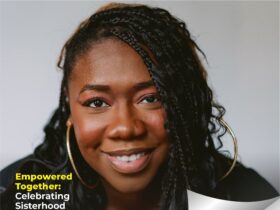Jumi Odumosu had lived earlier in New York, USA, and many places in New Zealand, including in a small town called Balclutha in the South Island. The population of Balclutha was about 3,000 people at that time, and it was a quiet and very rural community. She and her family were the only people of colour at the time, which led to social isolation. This isolation was manifested in limited social interactions. However, these challenges helped them become more resilient and adaptable. Jumi tells her full story here:
My migration to Canada was a blend of anticipation and adaptation. Prior to Canada, I resided in New York, USA, and in a serene rural town, Balclutha, on the South Island of New Zealand. With a population of about 3,000, it was a tranquil community, and we were the only people of color at the time, presenting its own set of challenges. However, these experiences instilled in me a profound sense of resilience and adaptability. Living in New Zealand also taught me to appreciate the beauty of a simple life; to savor the slower pace and find joy in the everyday moments.
When we relocated to Canada, our first stop was Burin Pennisula, Newfoundland and Labrador, I knew it was a rural area, still I hoped it would not repeat my initial isolation in Balclutha, New Zealand. Although I initially felt isolated living in Burin NL, my previous experience in Balclutha, NZ, helped me navigate the transition. Having gone through something similar before, I could integrate more smoothly in Burin than in Balclutha, New Zealand.
After nearly three years in Burin, we transitioned to St. John’s, NL, where my social and professional life began to flourish. My experiences in the U.S., New Zealand, and Canada have each contributed uniquely to my personal and professional growth. Each step of the journey has shaped me into who I am today, and I am excited about the future.
One unique experience I had relates to navigating career opportunities based on where I lived. While living in Burin, NL, there were certain career paths I could not pursue due to limited local resources. For example, the counselling program I am currently enrolled in at Yorkville University requires a practicum site and a qualified supervisor for completion. When I made inquiries while still in Burin, I was told that securing a placement would be challenging. As a result, I had to put my academic plans on hold until I relocated to St. John’s. Since the move, things have shifted significantly. I enrolled in the counselling psychology program at Yorkville University and now have a confirmed practicum placement for January 2026. I am excited to take this next step in my journey.
Looking back, I would not change much because every part of my journey has shaped who I am today. I started my professional career 24 years ago and have gained experience across various roles and sectors. Over that time, I have accumulated about 17 years of experience in human resources—through both paid and volunteer roles aligned with the different seasons of my life. Although my career path did not follow a traditional trajectory, mainly due to frequent relocations and family responsibilities, I remained actively engaged. I consistently sought opportunities to contribute, grow, and stay connected to my professional interests. If there is one thing I might have done differently, it would be to build a stronger online presence earlier in my journey (such as LinkedIn). A stronger online presence there could have helped me maintain visibility, build a professional network, and access new opportunities, regardless of location. Still, I appreciate how far I have come and am excited about what is ahead.
My advice to women of color who are migrants is to do your best to adapt to your new environment and embrace your newly adopted country. The longer one lives in a new place while holding tightly to their past experiences or cultural norms, the harder it becomes to thrive. Integration does not mean losing who you are. It means opening yourself up to growth, new connections, and opportunities. Integration starts with being open to learning and participating in your new environment—whether through volunteering, attending local events, or joining community groups. Small steps like chatting with neighbors, participating in community activities, or taking a class can help build connections and ease the transition. The sooner you find ways to bridge your past with your present, the more fulfilling and successful your journey will be.
Jumi tells her story from Newfoundland and Labrador, Canada.
















Leave a Reply